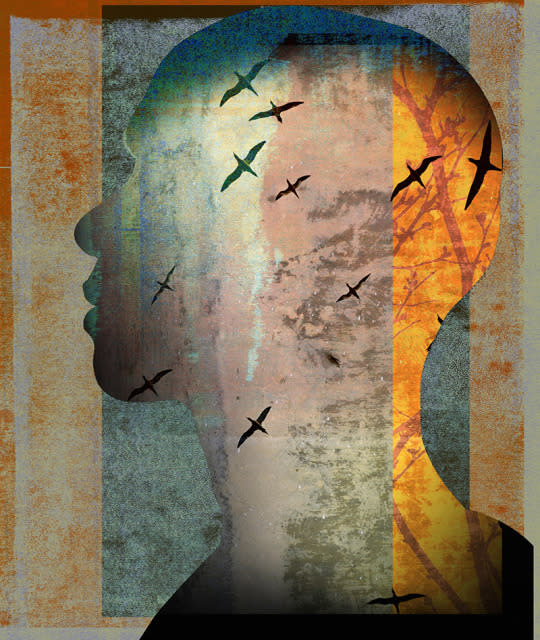Exposure Therapy: A Surprisingly Effective Treatment for Depression

(Photo: Corbis Images)
If you’ve experienced a traumatic, life-altering event, you might be surprised to learn that one treatment for such trauma — exposure therapy — involves repeatedly reliving the terrible event.
Sounds more harmful than helpful, right? But people who experience their fears over and over again — with the help of a therapist in exposure therapy — can actually learn to control those fears.
The technique is used to treat a growing list of health conditions that include anxiety, phobias, obsessive compulsive behaviors, long-standing grief, and even depression.
How Exposure Therapy Works
Exposure therapy can seem similar to desensitization. People with PTSD, including combat veterans and rape and assault survivors, may experience nightmares and flashbacks that bring the traumatic event back. They may also avoid situations that can trigger similar memories and may become upset, tense, or have problems sleeping after the trauma.
Edna B. Foa, PhD, director of the Center for the Treatment and Study of Anxiety at the University of Pennsylvania in Philadelphia, explains exposure therapy for PTSD to her patients this way: “We are going to help you talk about the trauma so that you can process and digest it, and make it finished business.”
While you won’t forget about the trauma entirely, she tells them, “It’s not going to haunt you all the time.”
Dr. Foa reassures her patients that they won’t be exposed to dangerous situations. She also tells them, “You are going to find out that you are stronger than you think.”
Although exposure therapy is considered a short-term treatment — 8 to 12 sessions is common — people with more severe conditions (and those with obsessive-compulsive behaviors) may need more time.
Exposure Therapy Works for Many Conditions
For PTSD, says Matthew Friedman, MD, PhD, senior adviser for the Department of Veterans Affairs’ National Center for PTSD, and professor of psychiatry, pharmacology, and toxicology at Dartmouth College’s Geisel School of Medicine in Hanover, New Hampshire, “It’s one of the best treatments we have.” A 2007 report from the Institute of Medicine also found the technique to be effective for PTSD.
Foa published a study in the Journal of Consulting and Clinical Psychology that showed a reduction in PTSD and depression symptoms in female survivors of assault after 9 to 12 sessions.
And a 2014 study in JAMA Psychiatry found that adding exposure therapy to cognitive behavioral therapy (CBT) was more effective at relieving long-standing grief than CBT plus supportive counseling.
Effective, But Different, as a Depression Treatment
While research is still ongoing, some experts believe exposure therapy can be helpful for serious depression, too. Depression and PTSD share common features, like flashbacks and memory flooding, says Adele Hayes, PhD, professor of psychology at the University of Delaware in Newark. But there are some important differences, too.
“With depression, it’s not necessarily a trauma, but a whole store of memories associated with being a failure, worthless, and defective,” she says. A depressed person’s encounter with a rude clerk at a store may trigger thoughts that seem to back up their fears: that no one likes them, that they are worthless, and so on.
RELATED: 6 Life-Changing Tips From People Living with Depression
In 20 to 24 sessions of exposure therapy, Hayes persuades her patients with depression to reexamine the events that trigger their “worthless” messages. Then she asks them to see if they can reinterpret them in a more positive light. Next, she helps them build up what she calls the “positive emotion system.”
But some people with depression may be fearful of having positive emotions, she says. Paradoxically, if they start to have hope, they may begin to fear that things may fall apart again and get more depressed.
Getting Started With Exposure Therapy
“The first few sessions are distressing,” says Foa, but the distress of exposure therapy usually lasts for only three or four weeks. Plus, patients usually work their way up to scarier situations by first tackling challenges that are somewhat less scary. For instance, someone with a social phobia or fear of public places may be advised to go to a supermarket during a time when it’s not busy. After that, they may visit the store when it’s more crowded. At first, it’s natural to feel upset, Foa says. But “if you stay long enough, the anxiety will go down,” she says. “In the beginning, you’re afraid you won’t be able to tolerate it, but in the end, you’re a winner.”
Homework is an important part of exposure therapy, so you’ll also do exercises outside of your sessions, Dr. Friedman says. This could include listening to a recording of your account of the trauma or performing a task that could trigger memories of the event. At your next visit, you’d talk through your experiences with your therapist.
Before you begin exposure therapy, make sure to get a clear explanation of what to expect from the therapist you’re working with.
To find an exposure therapy specialist, start by asking your family doctor for a referral, or contact organizations like the American Psychological Association or the Association for Behavioral and Cognitive Therapies that can help you locate one. Veterans can contact their local VA clinic for more information.
This article originally appeared on EverydayHealth.com: Exposure Therapy: A Surprisingly Effective Treatment for Depression
By Kathleen Doheny, Everyday Health
More from Everyday Health:
How Seasonal Depression Affects Bipolar Disorder
7 Practical Tips for Relieving Holiday Depression
Artificial Sweeteners and 5 Other Surprising Causes of High Blood Sugar
